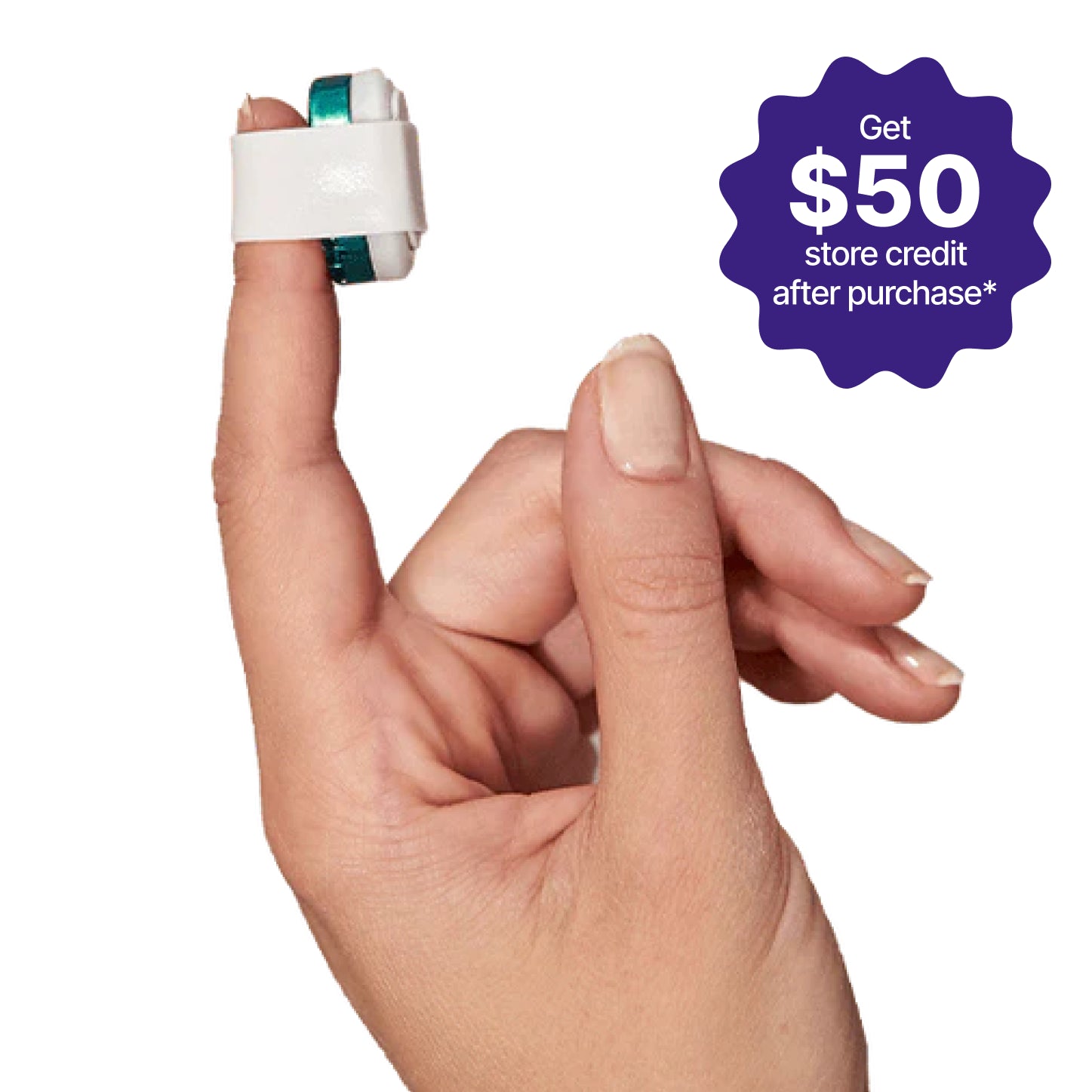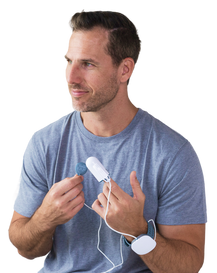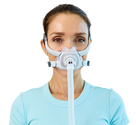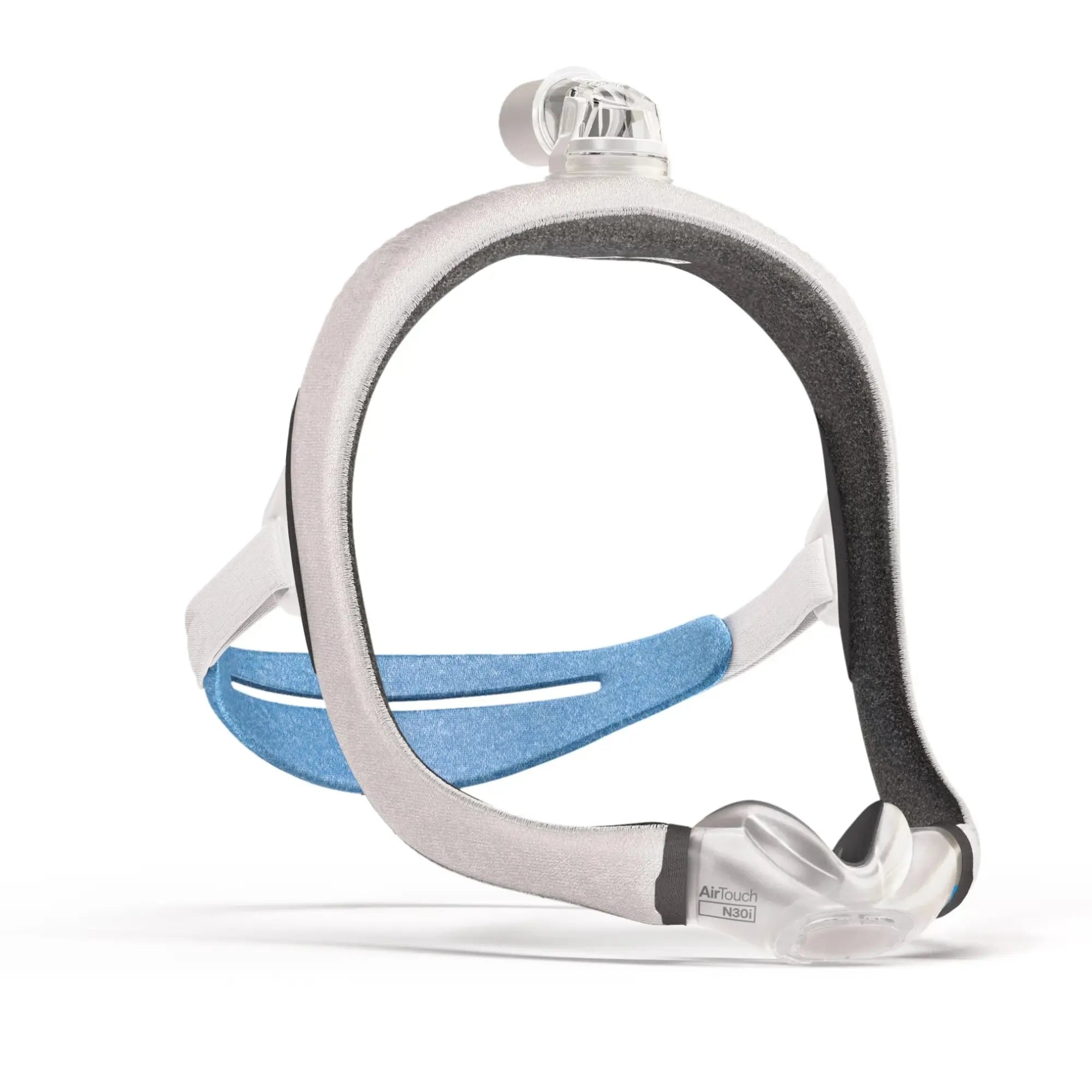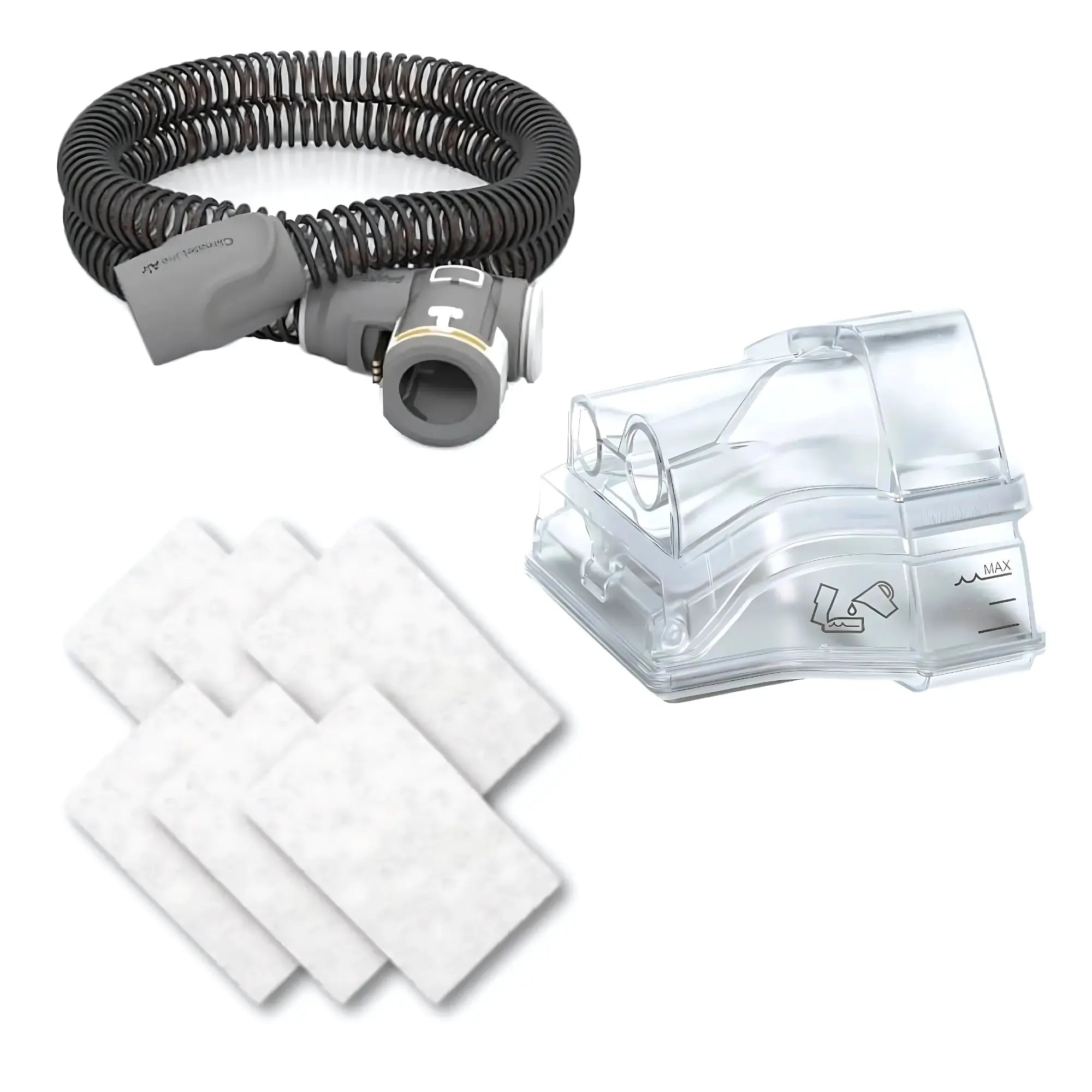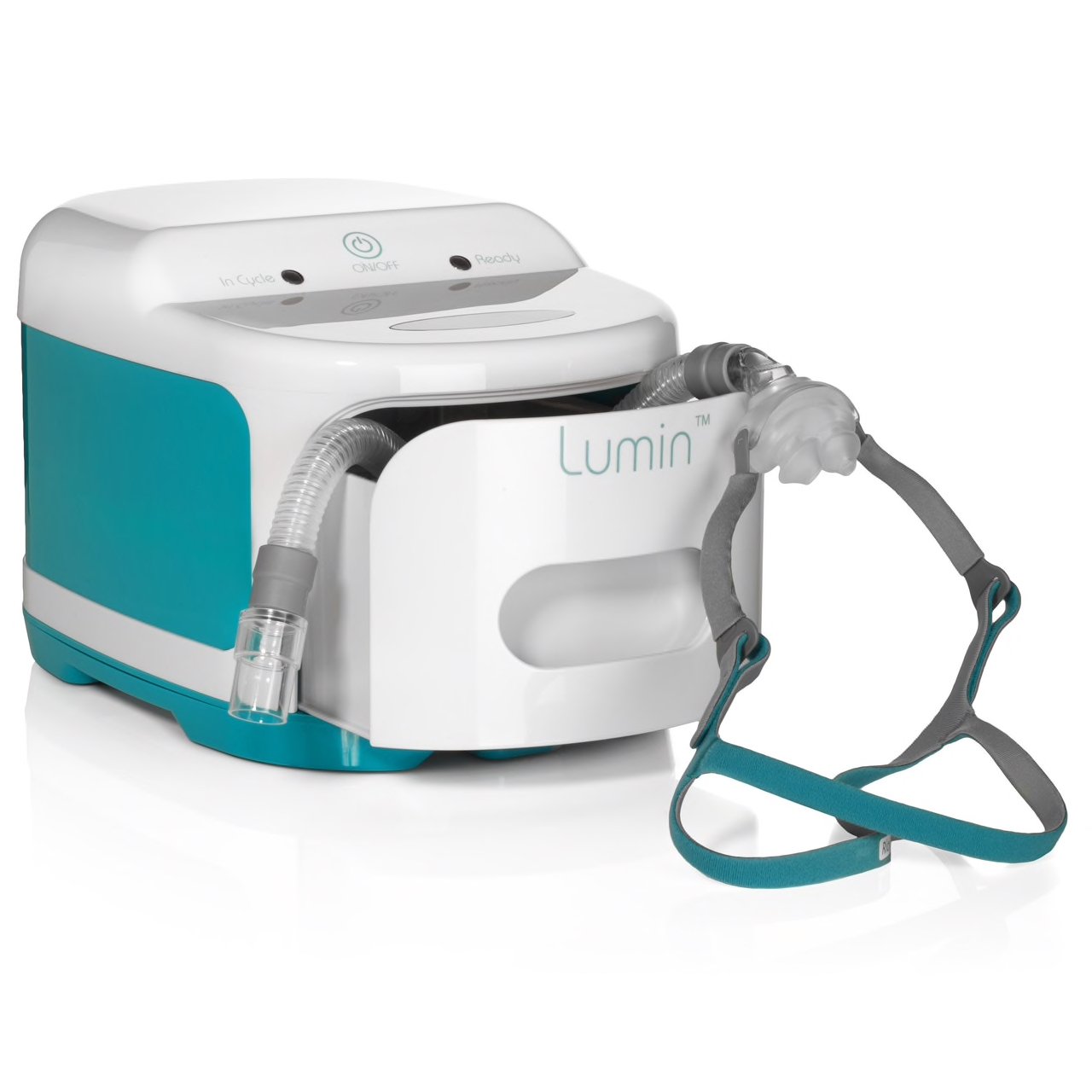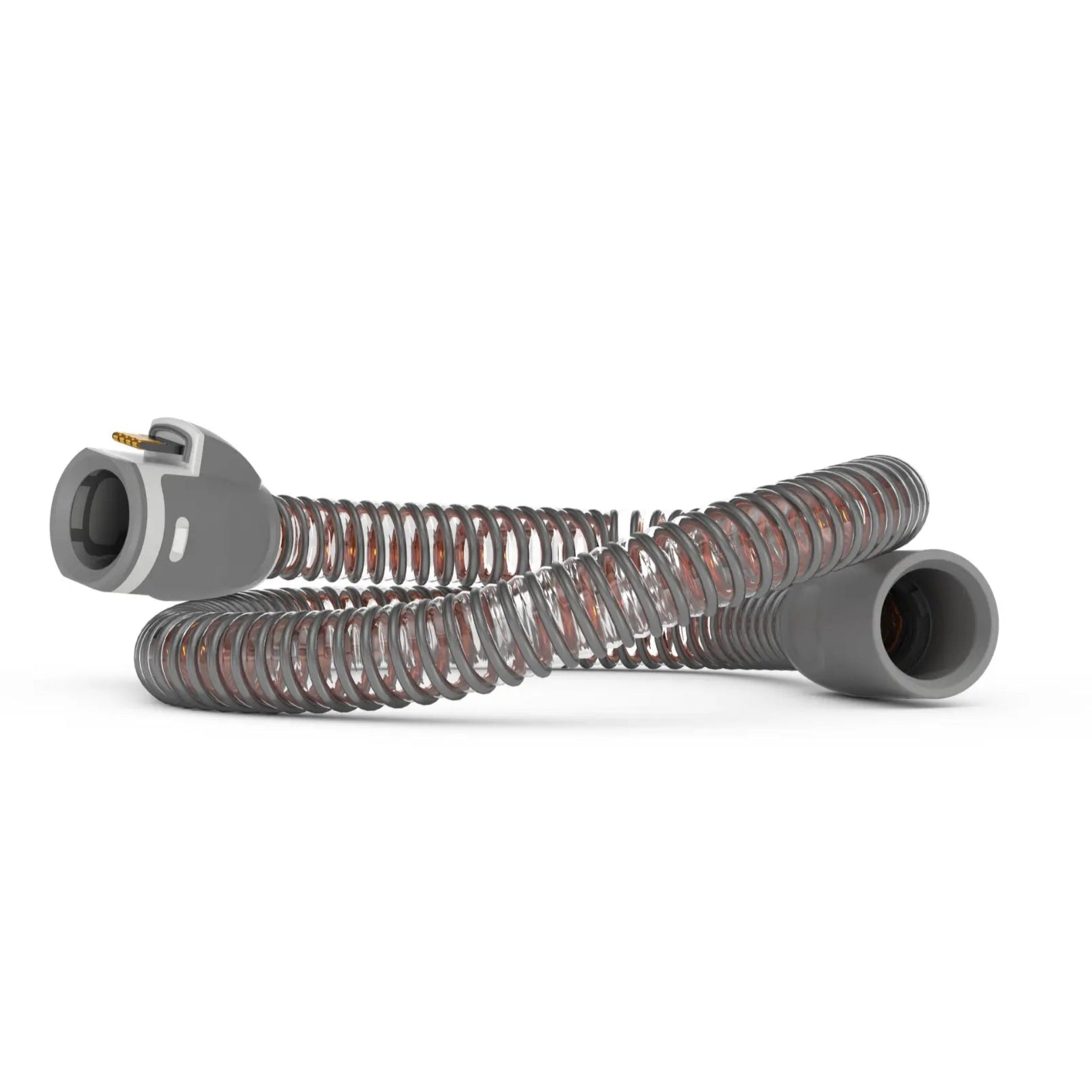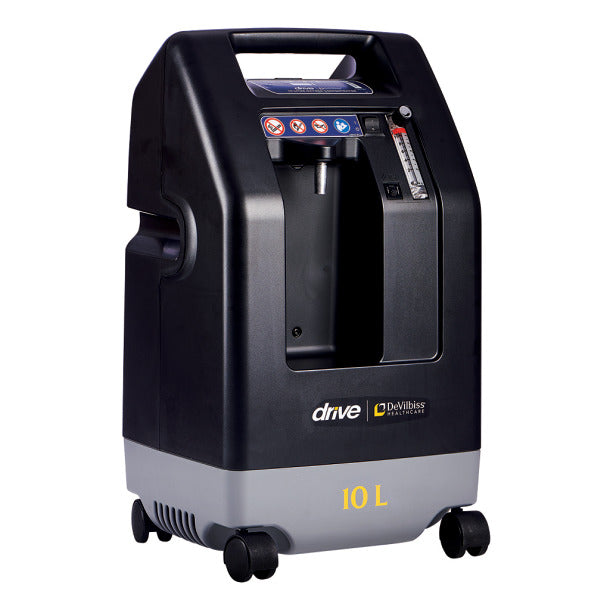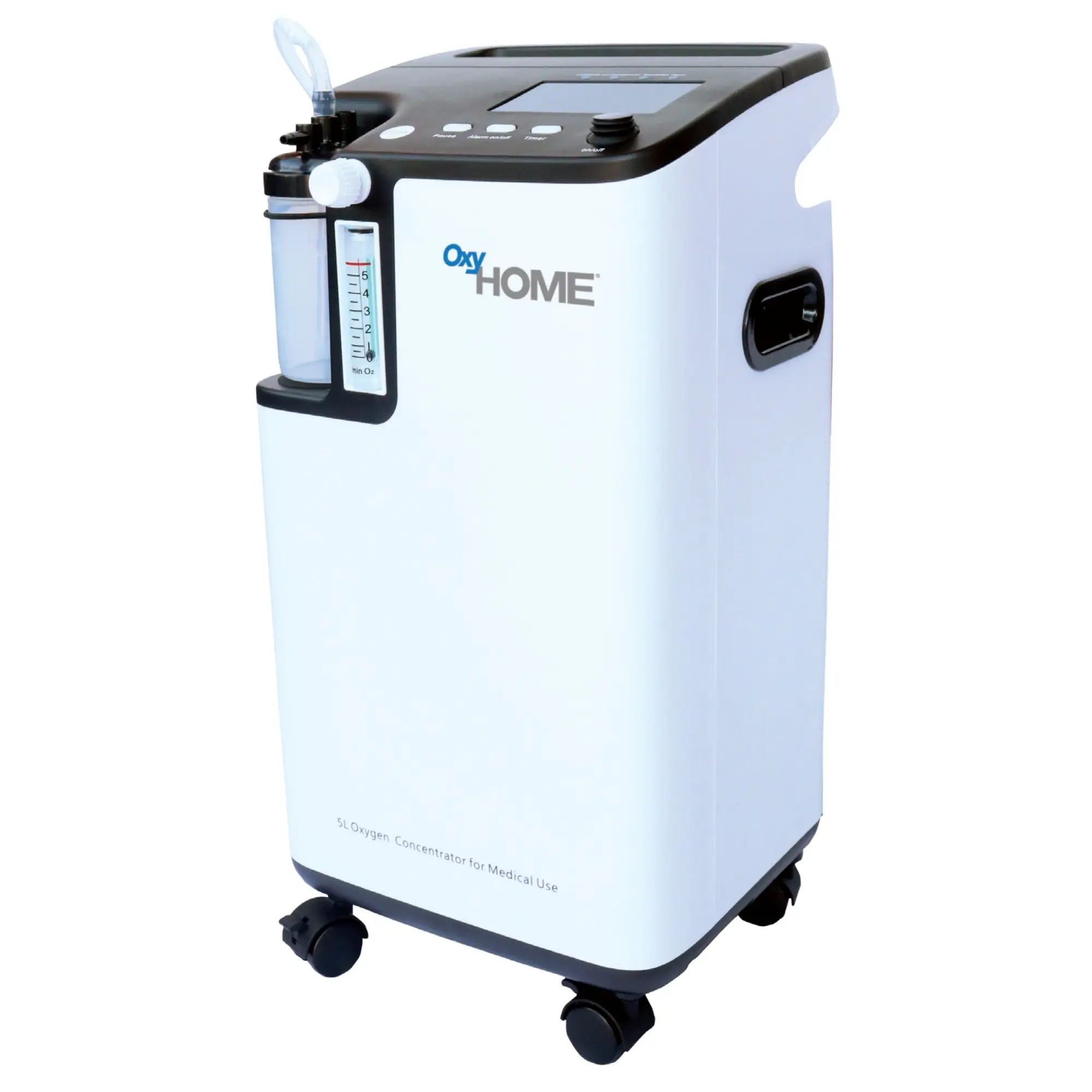If your child needs to use a nebulizer due to asthma or any other respiratory condition, then you know the importance of understanding how to use it properly.
We're here to help you navigate the world of nebulizers for kids, offering guidance on making the process as smooth and stress-free as possible and helping your child feel comfortable with the medical device, so they can receive the essential treatment they need.
Continue reading to learn more about how to use a nebulizer for kids, when are they necessary, their benefits, and much more!
What is a Nebulizer?
A nebulizer is a medical device often prescribed by medical professionals for children with respiratory conditions, such as asthma and severe allergies. Some of these devices are designed specifically for children, so that the nebulizer treatment experience becomes more inviting and less intimidating.
A nebulizer machine is a medical device that works by delivering aerosolized liquid medication through a face mask directly into your child’s mouth and nose. Unlike metered dose inhalers (MDI) and dry powder inhalers (PDI), nebulizers don’t require coordination or additional accessories, such as spacers, to be effective in children.
What Is the Correct Way to Use a Nebulizer for Kids?
Even though nebulizer treatment is quite easy to start, it’s important to know all the tips and tricks to ensure the fine mist of liquid medicine reaches your child’s lungs, ensuring their health and your peace of mind.
Using a nebulizer correctly begins by preparing your child and the equipment for the session. The first thing you should do when you get a new nebulizer is to read the manufacturer’s instructions for your specific nebulizer model to make sure you’re doing everything correctly.
Check that the liquid medication hasn’t expired or is damaged. Next, wash your hands before assembling the nebulizer machine on a flat surface.
Connect the face mask’s tubing to the machine’s air compressor and reservoir, measure the medicine as instructed by your child’s pediatrician or other healthcare provider and pour it into the reservoir or medicine cup.
Step-by-Step on How to Use a Nebulizer for Kids
Now that everything is prepared, you should follow these steps to make sure that the nebulizer treatment is as effective as possible:
- Make sure that the face mask fits snugly over your child’s nose and mouth or instruct your child to press their lips firmly around the mouthpiece.
- Turn on the nebulizer to start the misting process.
- Encourage your child to take slow and deep breaths as the medication begins to mist out.
- Guide your child to continue this deep breathing until the mist stops, which typically lasts 10 to 15 minutes.
- Turn off the machine after the medication cup is depleted.
- Disassemble the nebulizer to clean the medicine cup and face mask with warm, soapy water. Rinse thoroughly and allow to air dry.
- Store the dried components in a clean, designated area.
Remember that if your child isn’t able to breathe better after the number of nebulizer cycles prescribed by their healthcare provider, you should take them to a children’s hospital or to the emergency health center closest to you.
If you’re looking for the best and most reliable nebulizers to help your child feel at ease when receiving their treatment, look no further! Sleeplay has a collection of the best nebulizers for kids available on the market.

When Should Children Use Nebulizers?
Nebulizers for children are often prescribed by pediatricians and pulmonologists in instances where traditional inhalers might not be as effective or suitable. Typically, these medical devices are prescribed when an infant or child is experiencing certain respiratory challenges that may stem from various conditions, including:
- Chronic lung diseases where the lower airway becomes inflamed or constricted, leading to breathing difficulty, such as pediatric asthma or cystic fibrosis. The most common use for nebulizers in children is to deliver asthma medicine, such as albuterol and corticosteroids.
- Lung infections, such as pneumonia, in which the respiratory system is compromised, and the child may need assistance in getting the medication directly to their lungs.
- Severe allergic reactions that trigger respiratory distress, which require immediate relief and support for the child’s airway.
- Slow recovery from bronchitis, in which your child may need additional respiratory support to aid in a speedier recovery process.
If your child has been prescribed a nebulizer for any of the previous reasons, there are some alarm signs you should be aware of so you can get them immediate medical attention:
- Wheezing, which is a high-pitched whistling sound during breathing that indicates a potential airway obstruction.
- Persistent cough, which may be a result of inflammation or blockage in the respiratory system.
- Shortness of breath, which is when your child is struggling to breathe normally or experiences a sense of breathlessness during regular, non-exhausting activities.
- Rapid breathing while resting, this could be an indication that the body is trying to compensate for decreased blood oxygen levels.
- Chest pain or discomfort, this is often associated with respiratory distress and the strain placed on the chest muscles during labored breathing.
Being aware of these signs can help you understand when is the right time for your children to use the nebulizer, ensuring timely and effective treatment for your children’s health and respiratory well-being.
How to Prepare Kids to Use a Nebulizer
The first few times using the nebulizer your child may feel scared or uncomfortable, which can make it harder, or in some cases nearly impossible to comply with the nebulizer treatment as prescribed by their doctor. These are some tips for helping your child feel at ease when using their nebulizer:
- Help your child understand what is happening and why it’s happening. This invites them to cooperate and feel comfortable during their nebulizer treatment.
- Create a peaceful environment for your child by offering their favorite book, a quiet game, or turning on a television show that they like. This will keep their mind off the nebulizer while they receive their treatment.
- Integrate the use of the nebulizer into their daily activities to create a positive association.
- Teach your child how to operate the nebulizer machine to empower them to take control of their treatment.
- Praise your child during treatment sessions, emphasizing their responsibility and maturity. Express affection and appreciation for their efforts in improving their health.
- Offer them a small treat after each session to incentivize them to be consistent with their treatment.
What Supplies Do You Need for a Kids’ Nebulizer?
Air Compressor (Nebulizer Machine)
Medicine Cup and Tubing
Mouthpiece or Face Mask
Sterile or Distilled Water
Clean Towel
How to Clean a Nebulizer After Use
Keeping the nebulizer clean is crucial for its effectiveness, and to ensure the health and safety of your child. Cleaning after each use is a must, but you should also do a thorough cleanse on a weekly basis to keep it in top-notch condition. Here’s how to go about it:
- Start by immersing the face mask or mouthpiece, top piece and machine cup into a mild solution of vinegar and warm water. Soak for approximately 30 minutes.
- Upon soaking them, let these components air-dry naturally in a clean and well-ventilated area. This will not only prevent the formation of any unwanted residue, but it will also help maintain a hygienic environment inside the device.
- Carefully cleanse the compressor and tubing using a disinfectant wipe, ensuring that they remain dry throughout the process. Avoid any attempts to submerge these parts in water, as this may compromise the internal mechanisms.
- Another important part of keeping your child’s nebulizer clean and functioning properly is to be mindful of the air filter’s condition. Regularly replacing it every six months or as per the manufacturer’s instructions can significantly enhance the nebulizer’s performance and longevity.
By keeping up with these cleaning practices, you can ensure that your child’s nebulizer remains a reliable and safe device for their respiratory well-being.
Are Nebulizers Safe for Kids?
Using a nebulizer for kids is generally considered safe and effective when done under the advice of a medical professional. To make sure that the use of this medical device remains safe for your child, you should always follow the instructions provided by your child’s healthcare provider and by the manufacturer of the nebulizer.
Additionally, maintaining proper hygiene and cleaning the nebulizer regularly is necessary to lower the risk of infection when using it. Some children may be sensitive to the medications used in the nebulizer, so it’s essential to monitor their response to the treatment and report any adverse reaction to their healthcare provider.

Benefits of Using a Kids’ Nebulizer at Home
A kid’s nebulizer is a valuable medical device that assists in delivering specific medications directly to the lungs. The main benefits of this type of treatment are:
- Effective medication delivery: Nebulizers effectively turn liquid medication into a fine mist, facilitating direct delivery to the lungs, and ensuring effective absorption of the medication.
- Ease of use: Nebulizers are relatively easy to use for children, especially those who may have difficulties using inhalers or other respiratory therapy devices.
- Comfortable administration: The mist produced by the nebulizer is usually well-tolerated by children, making the treatment process more comfortable and less invasive.
- Rapid relief: Nebulizer therapy often provides quick relief for children experiencing respiratory distress, helping alleviate symptoms such as wheezing, coughing, and shortness of breath.
- Versatile and portable: Some nebulizers for kids are designed to be portable, enabling treatments to be administered at home or while traveling, which guarantees continuity of care.
- Kid-friendly designs: Many nebulizers are designed with child-friendly features, such as colorful designs or cartoon characters, making the treatment experience more engaging and less intimidating for children.
Nebulizers are medical devices used for a wide array of respiratory conditions, and they help your child feel and breathe better. Remember that they should be prescribed by a medical professional, and that you need to follow the manufacturer’s instructions to make sure the treatment is as effective as possible.
At Sleeplay, we're committed to assisting you in choosing the perfect nebulizer for your child's respiratory needs.



